When it comes to comfortable and healthy living conditions, choosing the right size dehumidifier can be critical. Be it a small bathroom or a large basement, controlling humidity requires one to recognize the measuring pillars used for sizing the dehumidifier. This guide walks you through some of the most important decision making factors. Why is sizing important and how does one look at the outstanding requirements of their space are included. Moreover, we will practically examine steps to choose the correct dehumidifier in terms of capacity and efficiency. This article aims to arm you with the knowledge to maintain a balanced, moisture-controllable home.
How Do I Determine the Right Size Dehumidifier for My Room?
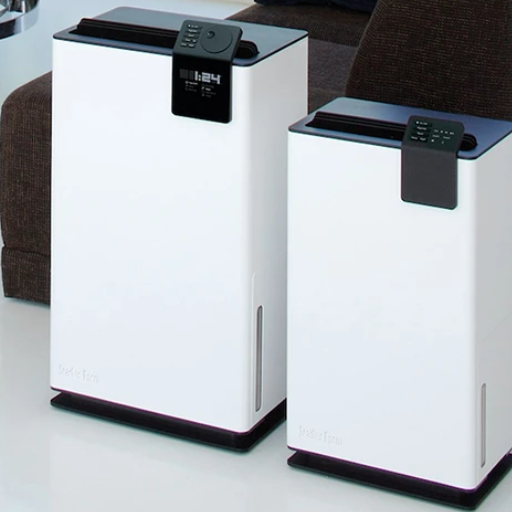
To determine the right size dehumidifier for your room, you need to consider two primary factors: the room’s square footage and the level of humidity present. Start by measuring the room’s dimensions to calculate its square footage. Next, assess the humidity levels—this could range from moderately damp (e.g., occasional damp spots) to extremely wet (e.g., visible moisture or water leaks). Use these details to match your room to the dehumidifier’s rated capacity, measured in pints per day (ppd). For example, a moderately damp 500-square-foot room may require a 20-30 pint unit, while a very wet room of the same size will need a higher-capacity model.
Understanding Room Size and Square Footage
Accurately determining the size of your space is essential when selecting the right dehumidifier. Start by measuring the room’s length and width in feet using a tape measure. Multiply these two numbers to calculate the square footage. For irregularly shaped rooms, divide the space into smaller, measurable sections, calculate their individual square footage, and sum them up. For multi-level spaces or areas with varying humidity levels, consider evaluating each zone separately to determine if multiple dehumidifiers are needed. A precise measurement ensures the dehumidifier operates efficiently and provides optimal moisture control for your specific environment. Always cross-reference recommended dehumidifier capacities with the room size to avoid underperformance or overcompensation.
Calculating Humidity Level and Moisture from the Air
To get started tracking the humidity level and measuring pore water in the air, start with a hygrometer, which is designed to provide accurate readings of relative humidity in a given space. Aratio of the current absolute humidity in the air to the highest absolute humidity is referred to as relative humidity in percentage form, and it indicates the amount of moisture the air has in comparison to the amount it is able to hold at a sertain temperature. Ideally, relative indoor humidity should be between 30 to 50 percent since values above or below this may cause discomfort together with mold growth or damage to household items.
Without a hygrometer, one can track humidity change by observing the environmental signs. Bundled clothing or windows that have condensation on them are a sign of humid air, while a damp smell or feel in widetrs can be an indicator for mildew. Monitoring temperature alongside these signs with a thermometer also aids in inferring humidity trends. For precise control in managing moisture, put into consideration the size of your space and its specific needs, for example, conditions in the bathroom or basement usually require more robust dehumidification solutions. Periodic monitoring with proper ventilation and the use of dehumidifiers goes a long way in ensuring the indoor environment is healthy and more comfortable for its users.
Using a Dehumidifier Sizing Chart for Accuracy
To determine the right dehumidifier size, it’s essential to consider both the room size and the humidity level. Dehumidifiers are typically rated by their pint capacity, which indicates how much moisture they can remove from the air in a day. For a small room (under 300 square feet) with moderate humidity, a 20- to 30-pint unit may suffice. Larger spaces, such as basements up to 1,500 square feet with high humidity, might require a 50- to 70-pint model or higher.
A sizing chart can help identify the appropriate dehumidifier capacity based on these factors. For example, a slightly damp 500-square-foot room might need a 20-pint unit, while a highly damp 1,000-square-foot space could require a 30- to 40-pint model. Rooms with severe moisture issues may necessitate even larger units. Consulting the manufacturer’s guidelines in conjunction with a sizing chart can ensure a precise and effective choice. Ultimately, assessing your room’s conditions and matching them to the recommended pint capacity will optimize your dehumidifier’s performance and maintain a healthy indoor environment.
What Factors Affect the Dehumidifier Size I Need?
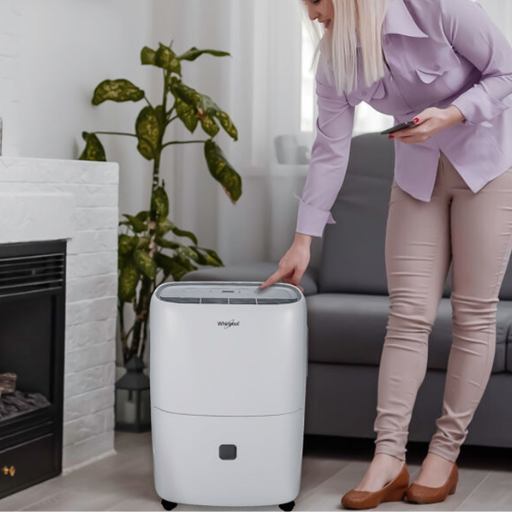
Several important factors impact the size of the dehumidifier you require. The first one is the size of the room, as larger areas usually require higher pint capacities to easily extract moisture. The level of humidity in the area also is very important to consider: a very humid room will require stronger units. Furthermore, the purpose of the room affects the size: for example, basements, laundry rooms, or bathrooms typically require larger units because of excessive moisture generation. Lastly, in addition to the aforementioned factors, the local environment alongside the climate or seasonal changes can also affect your judgement. Evaluating all these factors guarantees selecting the right dehumidifier ensuring optimal performance.
The Impact of Relative Humidity on Dehumidifier Size
Relative humidity directly influences the size and capacity of the dehumidifier you need. For spaces with low to moderate humidity (around 50%-60%), a small-capacity dehumidifier (20-30 pints) may suffice, effectively removing excess moisture without overexertion. However, for high-humidity environments (above 60%), especially in areas with poor ventilation or significant moisture sources, a medium (30-50 pints) or large-capacity unit (50+ pints) is often necessary to maintain comfortable and safe humidity levels. Using the appropriate capacity not only ensures efficiency but also prevents issues such as mold growth, condensation, or worsened air quality. Always consider the manufacturer’s recommendations and match the unit’s capacity to your room size and relative humidity for the best results.
Considering Basement and Crawl Space Conditions
Basements and crawl spaces often experience higher humidity due to their proximity to the ground and limited ventilation. Choosing the right dehumidifier for these areas depends largely on factors like square footage, current humidity level, and temperature. For basements, a dehumidifier with at least a 50-pint capacity is recommended for spaces up to 1,000 square feet with moderate moisture. Larger or excessively damp areas may require units with a higher capacity or continuous drainage options for convenience.
For crawl spaces, it is crucial to select a unit specifically designed for low clearance and difficult access, such as compact or ducted models. Energy-efficient units with built-in pumps or smart controls can provide added flexibility in hard-to-reach areas. Additionally, ensure the dehumidifier is rated for lower temperatures to avoid frost buildup, as crawl space conditions can often dip below average indoor temperatures. Proper insulation and sealing also play a key role in preventing moisture intrusion and optimizing dehumidifier performance for these challenging environments.
Identifying Excess Moisture and Musty Odor Issues
Excess moisture in crawl spaces can often be linked to high humidity levels, poor ventilation, or water seepage from surrounding soils. Signs of moisture problems include visible condensation on surfaces, water stains, or even pooling water. Additionally, musty odors typically result from mold and mildew growth, which thrive in damp environments. To address these issues, start by identifying potential sources such as leaky pipes, poor drainage, or gaps in crawl space barriers. Using tools like a hygrometer to monitor humidity levels or conducting regular inspections can help pinpoint problem areas. Addressing these concerns early, through solutions like improving ventilation, sealing gaps, or installing a dehumidifier, is essential to maintaining a healthier and odor-free home environment.
Which Type of Dehumidifier Should I Choose?
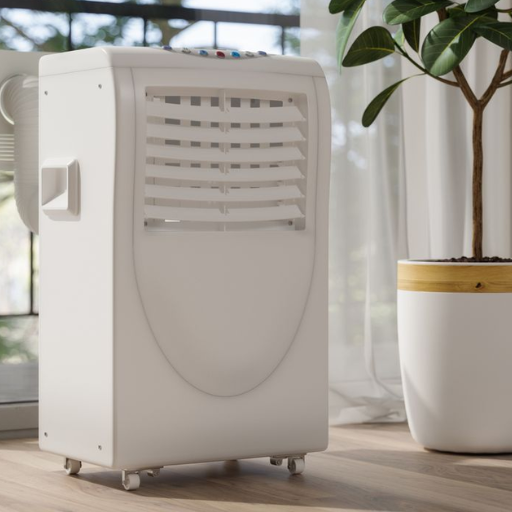
When choosing a dehumidifier, consider the size of the space, the humidity level, and specific needs. For small areas like bathrooms or closets, a compact or mini dehumidifier is sufficient. For larger rooms or spaces with high moisture levels, opt for a portable dehumidifier with higher capacity, often measured in pints per day. Whole-house dehumidifiers are ideal for comprehensive coverage and are integrated into existing HVAC systems. Additionally, look for energy-efficient models with features like adjustable humidity controls, automatic shutoff, and easy maintenance. Understanding your space and requirements ensures you select the most effective and reliable option.
Differences Between Portable and Whole-House Dehumidifiers
Portable dehumidifiers are compact, standalone units designed to manage moisture levels in specific rooms or small areas. They are easy to move between spaces, making them a flexible option for targeted use. These units typically require manual water reservoir emptying, although some models include drainage hoses for continuous operation. Portable dehumidifiers are more affordable upfront and are a great solution for renters or those looking to dehumidify targeted spaces.
On the other hand, whole-house dehumidifiers are built for larger-scale moisture control, improving air quality throughout an entire home. They are installed within the existing HVAC system and work seamlessly to maintain consistent humidity levels in all rooms. While the initial cost and installation expenses are higher, whole-house units are energy-efficient and low-maintenance, with larger capacities and features like automatic drainage systems, eliminating manual intervention.
Choosing between these options depends on your home size, budget, and specific moisture control needs. For smaller spaces or localized problems, portable units are ideal, while whole-house systems provide a long-term, comprehensive solution for larger properties.
When to Use a Desiccant Dehumidifier
Desiccant dehumidifiers are an excellent choice for environments where traditional refrigerant models may struggle. They are ideal for extremely cold conditions, as they do not rely on coils or refrigerants to remove moisture. Instead, these dehumidifiers use a desiccant material to absorb water from the air, making them highly effective in temperatures as low as 32°F or even lower. They are best suited for spaces such as basements, garages, crawl spaces, or industrial settings where humidity control is essential in cold or unheated areas. Additionally, desiccant models are perfect when you need to achieve very low humidity levels, such as for sensitive equipment, storage, or materials prone to damage from excess moisture. However, they can consume more energy than refrigerant dehumidifiers, so they may not be the most economical option for all applications.
Advantages of a Larger Dehumidifier with Higher Capacity
A larger and higher capacity dehumidifier offers several key benefits making it a practical choice for controlling humidity in large or difficult to manage areas. First, it can extract more moisture in a shorter amount of time, ensuring the space reaches the desired humidity level and maintaining it with utmost efficiency. This is especially beneficial in settings with a great deal of moisture or larger square footage. Additionally, higher-capacity units often offer advanced features like adjustable settings, options for continuous drainage, and energy-efficient modes which enhance usability. These units may come at an increased price but their effective performance under demanding conditions offers long-term savings by preventing structural damage, mold growth, and humidity based damage.
How Do Dehumidifiers Work to Improve Air Quality?
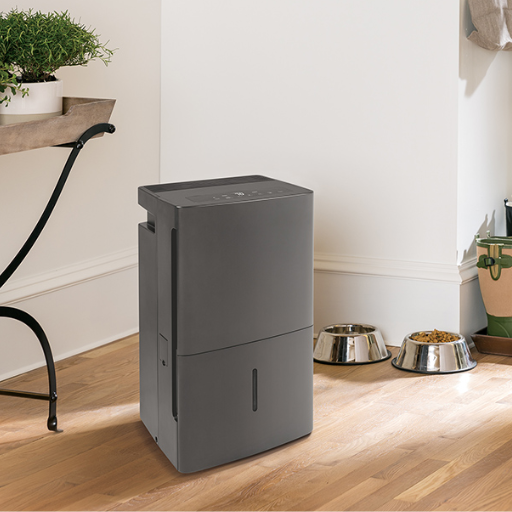
Dehumidifiers work by extracting excess moisture from the air, which helps reduce humidity levels in indoor spaces. They pull in air, pass it over cooling coils to condense the moisture into water, and then release the drier air back into the room. By lowering humidity, dehumidifiers prevent the growth of mold, mildew, and dust mites, all of which can negatively impact air quality. This process not only creates a healthier indoor environment but also alleviates allergens and improves overall comfort.
Understanding Condensation and Pints of Water Removal
Condensation occurs when warm, humid air comes into contact with a cooler surface, causing the moisture in the air to change into liquid water. This is a key process in how dehumidifiers remove excess water from the air. The measure of a dehumidifier’s capacity is often expressed in “pints of water removed” per day. This rating indicates how much moisture the unit can extract from the air within 24 hours under optimal conditions, typically at 80°F with 60% relative humidity. For example, a 30-pint dehumidifier can remove up to 30 pints of water per day in such an environment. Understanding the required capacity for your space depends on the room size and the level of humidity—larger or damper areas may require higher-capacity units. Efficient humidity control not only increases comfort but also protects furniture, electronics, and structural elements from moisture damage.
Managing Mold and Mildew with a Dehumidifier
Mold and mildew thrive in environments with high humidity, typically when the relative humidity exceeds 60%. A dehumidifier is an effective tool to regulate moisture levels and prevent the growth of these harmful organisms. By maintaining indoor humidity between 30% and 50%, a dehumidifier creates an environment that inhibits the proliferation of spores. Place the unit in areas prone to dampness, such as basements, bathrooms, or laundry rooms, to target moisture-laden air directly. Regularly empty the water reservoir or ensure the drain hose is properly connected to keep the unit running efficiently.
Additionally, pairing your dehumidifier use with good ventilation, regular cleaning of surfaces, and prompt repairs of leaks or water damage enhances its effectiveness. Modern dehumidifiers often include built-in humidistats, which allow you to monitor and maintain the desired relative humidity level easily. To combat mold and mildew effectively, select a unit suitable for your space’s size and its specific moisture conditions. Investing in a reliable dehumidifier not only curbs mold growth but also protects your health and property in the long term.
Enhancing Air Quality by Reducing Dampness
Reducing dampness is crucial for maintaining good air quality and preventing health risks associated with excess moisture, such as respiratory issues and allergies. Common methods include using dehumidifiers, improving ventilation, and repairing structural issues like leaks. Dehumidifiers effectively remove moisture from the air, while ventilation systems ensure proper airflow to prevent moisture buildup. Fixing leaks in roofs, walls, or pipes eliminates underlying causes of dampness. Maintaining an indoor humidity level between 30-50% is recommended for optimal air quality. Additionally, ensuring proper drainage around your home minimizes moisture seeping into foundations. By implementing these strategies, you can create a healthier indoor environment and reduce the risks associated with dampness.
What Are the Benefits of Choosing the Right Size Dehumidifier?
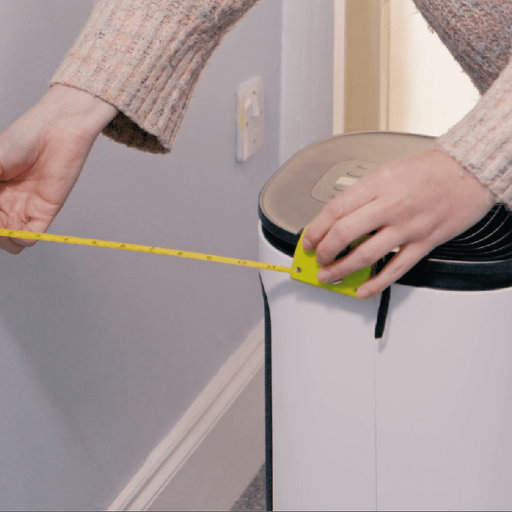
Selecting the right size dehumidifier is essential for maintaining optimal indoor comfort and efficiency. A correctly sized dehumidifier ensures effective moisture removal without overworking the unit, leading to better energy efficiency and reduced utility costs. It can also prevent issues such as mold growth, musty odors, and damage to furniture caused by excess humidity. Additionally, using a properly sized dehumidifier provides consistent performance, keeping your living space comfortable and reducing the risk of respiratory issues associated with high humidity levels.
Preventing Musty Odor and Mildew Growth
Preventing musty odors and mildew growth starts with controlling excess moisture in your environment. Maintain indoor humidity levels between 30%-50% by using a dehumidifier, ensuring adequate ventilation, and addressing any water leaks or infiltration promptly. Clean and dry damp areas, such as bathrooms or basements, thoroughly to remove any existing mildew. Additionally, regularly wash and air out fabrics like curtains, carpets, and upholstery, which can trap moisture over time. Using moisture-absorbing materials such as silica gel or baking soda in vulnerable areas can also help. By managing humidity and maintaining cleanliness, you can effectively eliminate conditions that encourage musty smells and mildew.
Maximizing Efficiency by Selecting the Right Dehumidifier
Choosing the right dehumidifier is essential to effectively manage indoor humidity while optimizing energy use. Begin by assessing the size of your space and the level of moisture present. For small spaces like bathrooms or closets, a portable dehumidifier with a capacity of 20 to 30 pints may suffice. For larger areas, such as basements or multiple rooms, consider models with capacities of 50 pints or more.
Energy efficiency is another critical factor. Look for units with ENERGY STAR certification, as they consume less electricity while delivering optimal performance. Features like adjustable humidity controls, built-in humidistats, and auto-shutoff functions can enhance convenience and prevent energy waste. Additionally, pay attention to noise levels, especially if the dehumidifier will operate in occupied areas.
Finally, consider maintenance requirements. Opt for models with easily accessible filters and detachable water reservoirs, or better yet, those equipped with continuous drain capabilities to minimize manual emptying. By selecting a dehumidifier tailored to your specific needs, you can maintain a comfortable and healthy indoor environment with maximum efficiency.
Ensuring Dehumidifier Won’t Overwork or Underperform
To ensure your dehumidifier operates optimally without overworking or underperforming, start by selecting the right capacity for your space. Measure the room size and evaluate the level of humidity—smaller spaces with moderate dampness require dehumidifiers with lower pint capacities, while larger, more humid areas need higher-rated models. Proper placement is crucial; position the unit in a central location with at least 6-12 inches of clearance around it to allow for adequate airflow. Regularly clean or replace filters and ensure the water reservoir is emptied or the drain hose is properly connected to prevent overflow. Additionally, use a hygrometer to monitor indoor humidity and adjust your dehumidifier’s settings accordingly, aiming for ideal humidity levels between 30%-50%. Implementing these steps will prolong the unit’s lifespan and maintain a healthy indoor environment effectively.
References
Frequently Asked Questions (FAQ)
Q: Why do I need a dehumidifier?
A: A dehumidifier is essential for controlling moisture levels in your home, which can improve indoor air quality and prevent issues such as mold growth and structural damage. If you have a damp basement or high humidity levels in your home, a dehumidifier may be necessary to maintain a comfortable and healthy environment.
Q: What size dehumidifier do I need for my space?
A: To determine what size dehumidifier you need, you should first calculate the square footage of the area you intend to dehumidify. Additionally, consider the moisture level of the space—whether it’s slightly damp, very damp, or an extremely wet space. Dehumidifiers are designed to remove a certain number of pints of moisture per day, so choosing the right size for your space is important to ensure efficiency.
Q: How do I determine the square footage for my space?
A: To determine the square footage, measure the length and width of your space in feet and multiply those numbers together. This calculation will give you the total square footage, which is crucial in deciding what size dehumidifier you need to purchase.
Q: What if I need a dehumidifier for my whole house?
A: If you need to dehumidify your entire home, consider purchasing a whole house dehumidifier. These units are installed as part of your HVAC system and are designed to manage humidity levels throughout the entire home, rather than in just one room or area.
Q: How does a dehumidifier work?
A: A dehumidifier works by drawing humid air into the unit and passing it over cold coils, which causes the moisture in the air to condense into water droplets. The dehumidified air is then released back into the room. The collected moisture is stored in a tank that you need to empty regularly, depending on the tank size and humidity level.
Q: What size tank should I look for when purchasing a dehumidifier?
A: The tank size you need depends on the humidity level and the size of the space you are dehumidifying. A larger tank can hold more water and may require less frequent emptying, which is convenient for extremely wet spaces or when you need a dehumidifier to work continuously.
Q: Can a dehumidifier help with mold issues?
A: Yes, a dehumidifier can help prevent mold growth by reducing the moisture levels in your home. Mold thrives in damp environments, so using a dehumidifier to maintain optimal humidity levels can be a proactive measure in mold prevention.
Q: Is it important to choose a specific brand when purchasing a dehumidifier?
A: While the brand can influence build quality and customer service, it’s more important to choose a dehumidifier that’s the right size for your space and meets your specific needs. Consider the unit’s capacity, energy efficiency, and features that may benefit your particular situation.
Q: Will a dehumidifier increase my energy bills?
A: Running a dehumidifier can increase energy consumption, but many modern units are designed to be energy-efficient. To minimize costs, choose the right size dehumidifier for your space and ensure it’s used only when necessary to manage humidity levels effectively.



